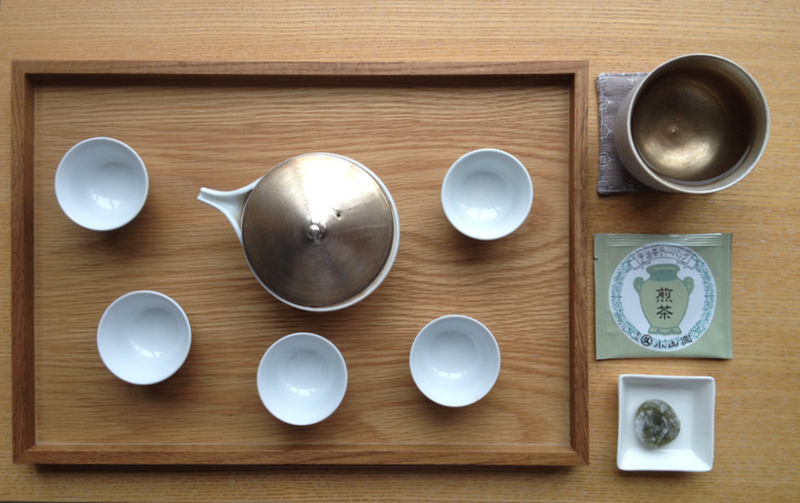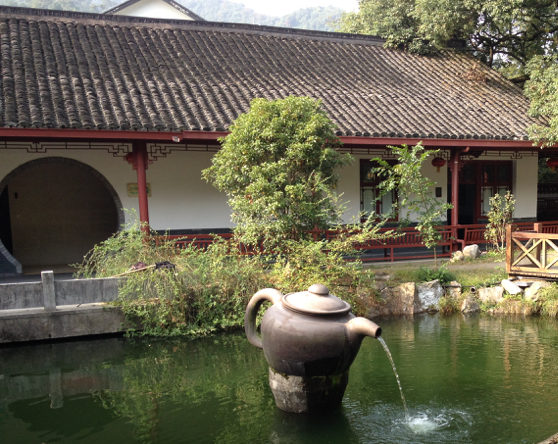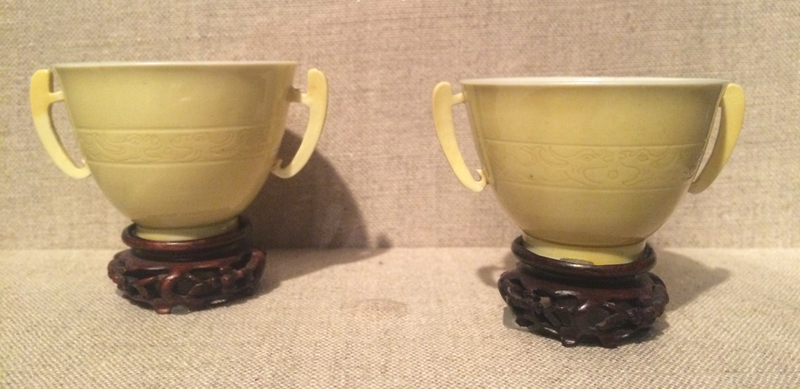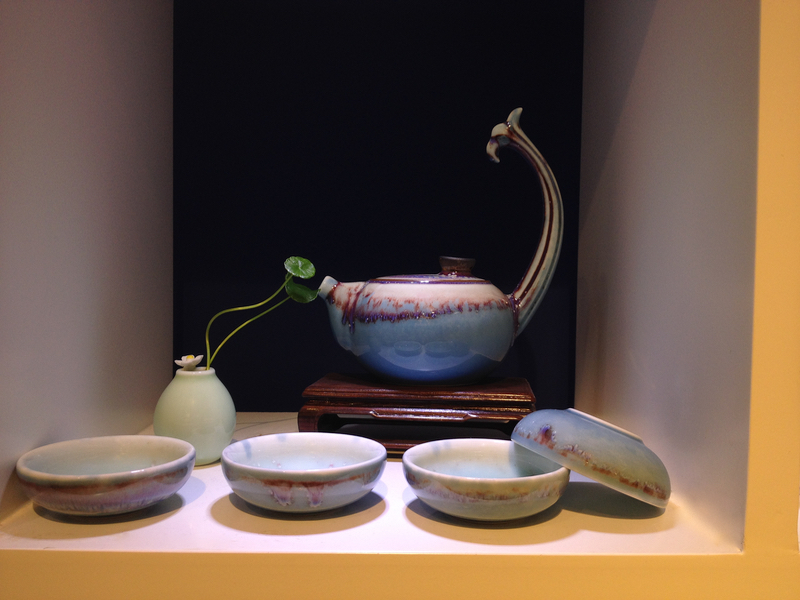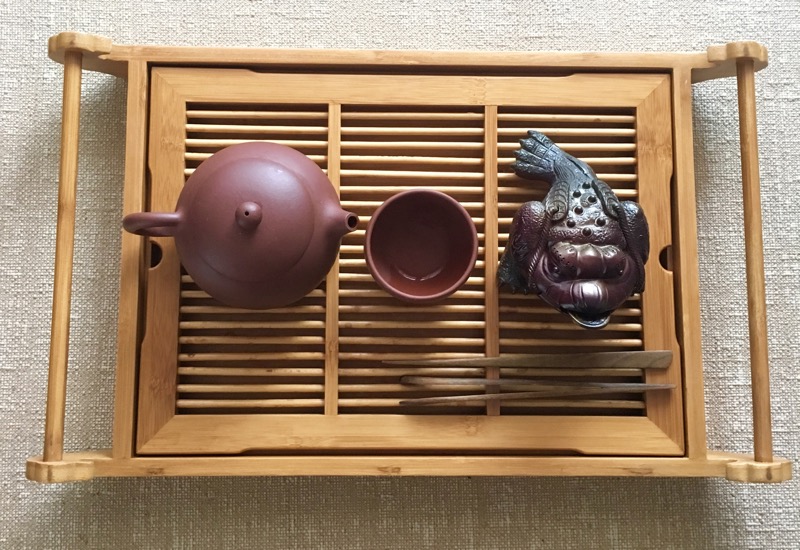TEA WARE: spotlight on beautiful, useful and some quirky tea pots and cups from East to West
Your tea ware should be considered for the aesthetic appeal, but also for the type and age of the tea being served. Millennia of connoisseurship has tested that the brewing and serving vessel can tremendously alter the quality of the camellia brew.


The globally sweeping hand of tea culture
Tea is the national beverage in China, Taiwan, Japan, India, Thailand, Turkey, Egypt, Morocco, Iran, Afghanistan, Ireland, Britain and unofficially many other countries, therefore tea ware has significant cultural values attached to it. The history of tea is fascinating and many countries adopted their own tea customs. From the Chinese for decades aged vintage pu-er, French flavoured tea, through the Russian smoked, Turkish super strong and Georgian spiced tea to the alternative Czech tea rooms, many nations have created their own tea culture. Blending foreign with the domestic has formed the shapes and the chosen materials of tea ware locally embodied in beautiful, useful and some quirky tea pots and cups. Tea travelled as far as to South America. Although the Brazilians and Argentines drink some tea today and the countries have one of the largest tea plantations in the world, it was coffee in Brazil and maté in Argentina and Uruguay that infiltrated the local culture. Maté, the potent herbal brew, is traditionally sipped through a personal silver or stainless steel straw (bombilla) from hand-carved gourd shaped bowl. Made from a small pumpkin, the calabash also known as guampa or mate, is still widely seen in public in these latin countries. Bellow is a Venezuelan silver pot with a central hole for warm charcoal that like samovar kept the maté brew ready for sipping.

Historically, tea sets were made for the well-off and royal courts, but as tea became more democratised and the working classes in China, later in Japan, Europe and India fell for the mind sharpening yet relaxing beverage, more basic tea ware emerged. Turkey is the world’s biggest consumer of tea per capita today, and its tea houses are so blended with the local lifestyle that most lounges serve the heavily sweetened black tea with a piping hookah at any time of the day or night.
Ironically, in the third millennium AD the global democratic movement swept tea drinking into that wasteful one use paper or for worse a plastic cup. In the realm of sophistication we are certainly in the dark ages. Here, I delve into the the glorious past that now inspires the newest generation of artisan potters, whose artful endeavour will hopefully rejuvenate the special, mindful tea time, that humanity once cherished so much.

Tea as the status symbol: silverware, fine porcelain, gold paint
In the glorious era, when hosting tea parties, lavish displays (Europe) as intellectual (China) or spiritual affairs (Japan), the chosen tea service played an important role in entertaining or a mindful encounter. Displaying an artistic prowess of the selected potter was the mark of discernment for the well-educated class. Today we see these gems in museums or in a more subdued version at the most luxurious hotels where afternoon tea is served. The Peninsula Hotels (tea in The Living Room in Beverly Hills being my favourite), the Ritz (the Sinatra pianist rocks), Brown’s (this first London hotel is a must), Dorchester (creative and fancy; “spatisserie”, sleeping beauty), Claridge’s (classic) and the Goring (the Royals’ go to) hotels in London are some that keep the high style both in traditional afternoon tea as well as its creative versions. The tea, milk and sugar are often served in silverware or gilded one-handed pots, and the fine bone china cups and saucers are mostly made in England or Germany.
Tea ware today
In modern times we are intrigued by tea ware not as the status symbol, but more for its physical charm and practicality. In Hong Kong boasting with great tea rooms, the Flagstaff Tea Museum annually organises a contest for the best designed tea set. These are often quite ridiculous creations that rise one’s eyebrows, and the tea ware exhibited is not purposed to serve your guests. Aside from its displayable awe and the versatile beauty, tea ware also has distinct features depending on the country from which it heads. The shapes and materials are often the results of practical thinking born from the locally popular tea styles and customs.
Materials used to make tea ware: brass (well sealing tea storage), bronze (rare today, often contains toxic substances), clay (kaolin for porcelain; highly viscous Zisha clay in China,…), copper (lower cost), glass (iced tea, neutral material with low heat preservation, cups for Moroccan mint tea, Turkish black tea), iron (heavy cast pots put on direct heat in Japan), lacquer (precious tea caddies in Japan), plastic & paper (wasteful society’s to-go cups), silver (pots and milk or water jugs), tin (only for raw tea string), wood (today only for tea storage and utensils like bamboo spoons, thongs, matcha whisks and chanoyu ladles).
Porcelain has the ability to brew just about any tea since the vessel doesn’t absorb the aroma of the tea, but is best for green teas. Unglazed clay should be used only for one type of tea such as less slightly oxidised oolong, baked oolong, more oxidised style teas, smoked or roasted tea or pu-er. Each of them needs its own brewing pot and cup for the best aromatic and pure result.
Japanese tea ware: from sturdy cast iron hob pots to fine matcha bowls as art pieces
It is in Japan that many Western potters get the most excited about the tea ware artisanship. There are many kilns that have been crafting tea vessels for many generations. Most potters do not focus solely on tea ware though, but broaden their oeuvre to other forms. Japanese ceramics inspire countless western potters, from Britain (Tom Kemp, Phil Rogers, …) through France (Cecile Cayrol), Czechia (Martin Hanus) to the Americas (Peter Voulkos). Beyond the symmetrical European tradition ”a lot of them found they liked the looseness of Japanese ceramics, the freedom of form they could achieve by allowing the clay to take its own shape,” said Barbara Perry, the Everson Museum of Art in Syracuse curator of ceramics in an interview for NY Times. Chawan, a deep bowl for whisking powdered matcha tea, has thus entered the repertoire of Western pottery. Nevertheless, the deep large bowl is only suitable for this tea style since it does not seal temperature well.


A lidded Yokode kyusu pot with a hole in its one handle and in the lid is much better for kabusecha, kamairicha, kukicha, sencha and gyokuro, and so is the handless hohin. The steamed green teas are sensitive to fermentation (water droplets accumulate on the fully closed lid) and are brewed on lower temperature. Cold brewing through a glass jar with a strainer suitable for ice cubes placed above the loose tea leaves has become trendy in recent years at the Tokyo sit-down tea houses like ChaChaNoMa. Hojicha, the roasted green tea, and genmaicha, the puffed rice green tea blend, are consumed in larger quantities so best serve them from a larger porcelain pot (in Japan known as Ushirode kyusu which is the most common Western teapot style) into a tall cup to keep it warm. Yet, the best heat preserving properties has Tetsubin cast-iron teapot, which distributes the heat evenly can last for generations and can be used on direct heat. Porcelain enamel is often used inside the metal tea ware today to neutralise the metal’s flavour changing effect on the tea. Cups with tapered sides express the aroma best.
A creative spirit of the greatest Japanese potters like Shoji Hamada inspired throngs of contemporary artisans. Above all, the Raku ware epitomises Japanese mastery of the handmade ceramics know-how. The aspect of wabi-sabi aesthetics – an organic and in a laic glimpse simple art that takes an epic effort and long training of the artist – is best captured in clay. Bellow, see the matcha bowls in the Raku ware museum in Kyoto.

Chinese tea ware: from brick tea to steeping tea
Wooden bowls were used at first in China. During the Tang dynasty tea became the national drink and the art of pottery at that time has begun to involve more sophisticated designs and techniques. At that time easily transportable tea bricks (read more in my research focused on the History of tea) were ground into powder and whisked into a beverage similar to matcha, that was popularised by the Buddhist monks in Japan later. Whisked tea called for a bowl with high walls.
In China a steeping pot or lidded cup used to strain the liquid from the leafs became common from the 1400s Ming Dynasty when also kettles replaced bottles for boiling tea. The Jingdezhen porcelain kilns became renown during the Song Dynasty and the West has also fallen for the fine porcelain to replicate it later in Meissen and other renown European manufactories. In Hong Kong, where affluence meets desire, the best quality porcelain and the unglazed Yixing clay ware (from the highly viscous and easy to form Zisha clay) at Fook Ming Tong inside the IFC Mall is of the best quality. The Zisha clay ware has high water absorbency, lets air but not water pass through its walls and thus “is great for sealing in the fragrance of tea”, writes Fang Lili, PhD in his book on Chinese Ceramics. Fine tea drinkers should consider using one such pot for one specific type of tea so its fragrance remains unaltered. A specially pointed knife with wooden handle for breaking pu-er cakes or bricks is also very useful.
Tea pets, the symbolic little animal figures have a long history reaching as far as the Yuan dynasty (1206–1368). Often made from the Zisha clay, they are used to bring luck incorporated into the Chinese tea ceremony (watch my video). If you would like to buy the whole apparatus for semi-fermented oolong teas used in gong-fu cha ritual or an individual porcelain gaiwan (Chinese style lidded brewing pot for a single cup of tea) then go to any serious Chinese tea room such as Tea Drunk in New York, Song Tea in San Francisco, and of course to the Best tea rooms in Hong Kong.

Some countries have developed characteristic glazing. The eye soothing blue green celadon hues or the purity-highlighting white tones of Joseon dynasty in Korean ware or the celadon jade green shades on Taiwanese ware are purely aesthetic so get what your eye pleases. Korea has inherited its tea culture from China and Japan as did Taiwan. Many distinct creative design styles have emerged on these island nations recently, some incorporating Western elements into their local heritage. Even the East is now moving to the wasteful one-use paper cup. Environmentally conscious businesses or states like Colorado in the US increasingly use recycled cups to go, let’s see where Asia goes.

Indian tea ware: encounters with the Arab world
In India mostly large metal (copper and silver) kettle heated over a gas burner (samovar is typical in Western Asia from the end of the 18th century) has been used for tea sipping. With the colonising British Empire porcelain entered the luxurious hotels and palaces, with the exception of the typical Indian train tea service. The journeys across India have traditionally involved tea being served in clay cups that are still used only once. They are destroyed to assure the traveller that no lips from the lower caste had touched the same cup. Like one use paper and plastic cups of the third millennium, shameful!
The poor in India do not enjoy tea very often, but these who can afford eating out are being served mainly spiced chai in thick glass cups. The East India Company‘s impact on the colony’s venture into tea farming also infiltrated Western tastes into tea ware. Nevertheless, the countries of the Orient influenced more significantly the local design. The most renown is the silver Kutch ware characteristic by “heavily embossed work with parts in the form of an animal“, while “a Madras craftsman would decorate his work with images of gods, Swamis, being carried in procession to the accompaniment of music and dance”; and “pieces from Calcutta are embellished with rural scenes“. These regional differences were showcased during the exhibition “Delight in Design: Indian Silver for the Raj” at the gallery inside the Columbia University. Elaborate motifs with floral themes were also often carved on the pewter or silver ware. The English custom of adding milk into black tea transferred to the high castes who needed a milk jug to add to their tea drinking sets.
 Chai has become popular as far as in Australia and California. In the trendy cafés of Melbourne I sipped on chai with almond milk, while in the hipster Mission district in San Francisco the Samovar tea room serves chai properly ladled from from sizzling large pots with cows milk or ready made in boxes to go. The tea ware is simple, no fuss or elaborate decoration. Minimalism is trendy in the hipster sphere of the third millennium.
Chai has become popular as far as in Australia and California. In the trendy cafés of Melbourne I sipped on chai with almond milk, while in the hipster Mission district in San Francisco the Samovar tea room serves chai properly ladled from from sizzling large pots with cows milk or ready made in boxes to go. The tea ware is simple, no fuss or elaborate decoration. Minimalism is trendy in the hipster sphere of the third millennium.

Western tea ware: from copycats to creative guardians of the eastern secret
Tea was popular in Russia well before it reached Europe. Although the copper, silver or even entirely golden samovar kept the water hot and the strong brew above ready to pour any time, the Russian tea ware was largely influenced by the European porcelain tradition. Samovar travelled West, thick glass ware was cheaper to use, but once the secret of porcelain manufacturing was deciphered by the Europeans, it became popular between the upper classes. German fine porcelain factories like Meissen, Herend Porcelain Manufactory and Hollóháza Porcelain in Hungary, became legends inspired by Chinese motifs but also local scenery and rural life. There is only a handful of factories in Europe where each pot, cup and saucer is still made by hand.
The antique markets offer an interesting choice for collectors, but for potters craft the English countryside offers the most diverse talent. One of the oldest English porcelain makers, The Royal Worcester has supplied fine bone china to distinguished customers including H.M. The Queen. Its manufacturing moved abroad and to Stoke-on-Trent, the industrial hive of traditional British pottery, where also The Wedgwood headquarters are. One of my favourite contemporary artisan potters there is the Japanese-British Reiko Kaneko, who also designed table ware for the famous Fat Duck restaurant. In London, the British Ceramics Centre across from the British Museum is my go to source, and for more simple pieces the Postcard Teas.

The West is catching up with its environmental guilt gap. My favourite ecological thermos makers are Aquaovo and Libre, both BPA-free with glass interior. They look good and do not get as easily stained as the metal thermos. There are so many options today, as well as rules that can be broken, when hundreds of books suggesting one pot or the other were written on the topic. Yet, at the end of the tea ware dilemmas and disputes, it is the quality time that you set aside for the enjoyment of this millennia old beverage. I wish that clarity, peace and restfulness enters your mind while sipping that fragrant cuppa.
Read more about HISTORY OF TEA
CHINESE TEA
JAPANESE TEA
TEA TRENDS
and other posts touching the tea ware subject at La Muse Blue.
NOTE: Most of the information in this post was gathered from my museum excursions. From the British Museum, the National Gallery in Prague, through Tokyo’s Nezu Museum, The Museum of Oriental Ceramics in Osaka, the National Museum in Shanghai to private collections in Palm Beach, Florida, each contributed to my understanding of the use of tea ware in various cultures. Additionally, I zipped through the books on Chinese, Japanese and contemporary Western pottery in my home library. Do not hesitate to contact me for any book recommendations.





